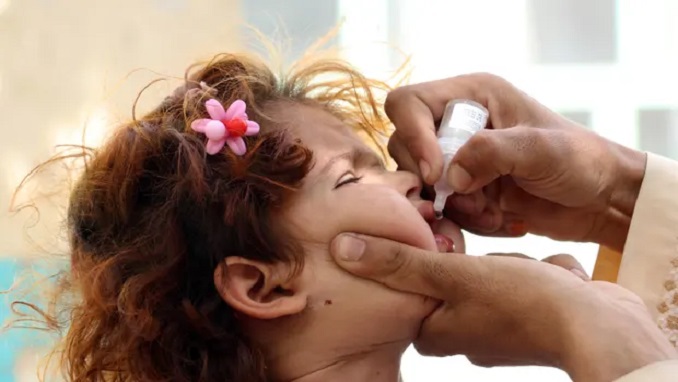
A mutated virus, anti-Vader’s, and a vulnerable population. Polio has returned to the United States. The disease was snuffed out of the country in the 1970s. But now, it’s come back.
This June, a young man in New York went to the emergency room. Symptoms included five days of a fever, a stiff neck, pain in his back and abdomen, and constipation. Even more concerning, his legs had been abnormally weak for two days. Lab tests brought back a shocking diagnosis: poliovirus.
Throughout the first half of the 1900s, thousands of children died or were paralyzed from polio. There were 20,000 cases of paralysis from polio in 1952 alone.
The disease was finally eradicated from the U.S. in 1979 thanks to vaccinations. It marked one of the greatest achievements ever of modern medicine.
There were only three known cases of polio in the 21st century, all thought to be imported to the States, affecting a total of 10 people. So how did this eradicated disease return to America?
Polio’s return resulted from the confluence of a complicated set of scientific and societal factors that have allowed a mutated version of the virus to start circulating in a susceptible community.
The poliovirus found this year is not the same one that there used to be. Thanks to vaccinations, the original polio was eliminated from all but two countries, Afghanistan and Pakistan.
Since the Covid pandemic, the pool of unvaccinated, vulnerable people has grown. A massive disinformation campaign, combined with conspiracy theories, as well as the politicization of medicine has created a dangerous situation in which people are not getting vaccinated anymore.
Enter Polio.
Low vaccination rates in communities are the result of an organized campaign waged by national anti-vaccination groups for years. Anti-vaccine pockets have sprouted up across America, some organic, and some seeded by national groups.
Questions about vaccinations began to emerge in the early 2000s, with a new generation of parents who had no first-hand knowledge of vaccine-controlled diseases including polio and measles, experts have said. This then was seized by national anti-vaccination groups as an opportunity.
The consequences of this dangerous campaign became clear in 2018 when an unvaccinated child trigged a measles outbreak in New York. The outbreak affected 649 people, grabbing national attention and intensifying campaigns from both sides of the issue.
Efforts were made by the communities to spread information about vaccinations and successfully began countering anti-vax sentiments across the country. Until Covid hit.
Recent data revealed that childhood vaccination rates have declined worldwide since 2020 – the biggest backslide in 30 years. The reason is likely twofold: first, reduced access to standard pediatric appointments disrupted vaccination schedules, particularly in east Asian and Pacific nations.
Second, at least in the US, growing distrust of government public health agencies and the spread of anti-vaccine talking points has taken a toll.

Be the first to comment